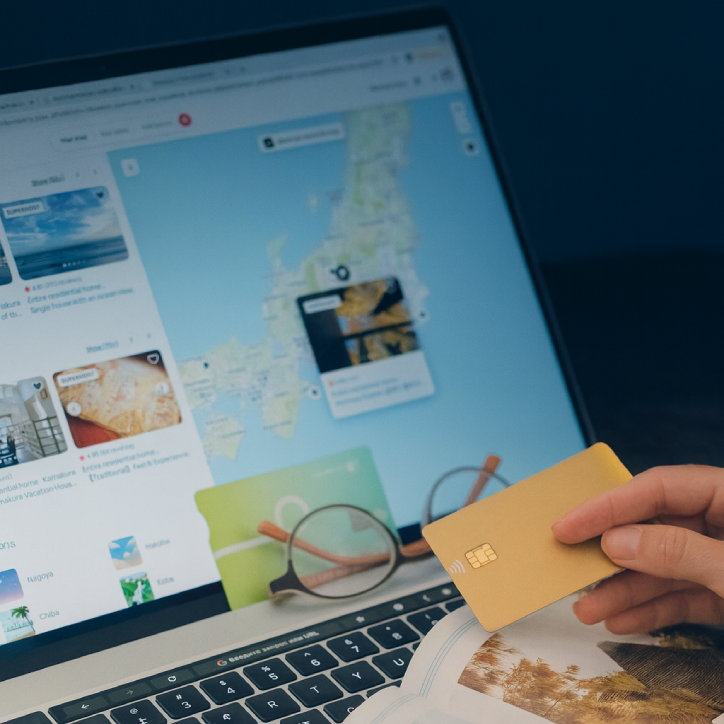Back to all Articles
Karol Andruszków
Karol is a serial entrepreneur who has successfully founded 4 startup companies. With over 11 years of experience in Banking, Financial, IT and eCommerce sector, Karol has provided expert advice to more than 500 companies across 15 countries, including Poland, the USA, the UK, and Portugal.
How to Monetize a Service Marketplace: Top Revenue Models Explained
Updated:
Tue, May 27
Czas czytania: 17 minut

Building a service marketplace takes more than good software. Monetization shapes how your platform grows. It decides who pays, when they pay, and how you collect money.
Choosing the right model early is critical. It can change the features you build and the way users behave.
In this article, we’ll explain the most common ways to monetize a service marketplace. You’ll also learn:
Choosing the right model early is critical. It can change the features you build and the way users behave.
In this article, we’ll explain the most common ways to monetize a service marketplace. You’ll also learn:
- The most common monetization strategies used by 15 world-known marketplaces
- How platforms combine multiple models to scale effectively
- Lessons from top marketplaces to help you avoid common mistakes
Marketplace Business Models Examples
Let’s explore the most popular revenue models used by service marketplaces around the world.
Each of these models has its own strengths, risks, and ideal use cases. What works for a ride-hailing app might not suit a home services platform.
We’ll break down the core models one by one.

You can see this model almost everywhere.
Uber takes a commission from each ride, Upwork charges freelancers a cut from every payment, and Airbnb earns from both hosts and guests. Some platforms split commissions between both sides, others pick one.
The standard commission fee for online marketplaces typically ranges between 10% and 20%.
Real-world examples include Airbnb, Uber, Upwork, Fiverr, TaskRabbit, DoorDash, Grab, and Rover — you'll read about them shortly.
For example, HomeExchange charges users an annual membership to join its home-swapping network. Some home service marketplaces allow plumbers and electricians to pay a monthly fee to be listed, rather than charging a fee for each job they win.
Subscriptions bring stable, predictable revenue. They work best when users get continuous value, like a steady stream of leads or access to helpful tools.
You’ll see how Care.com, and Angi use subscriptions later in the article.
For instance, Thumbtack allowed service providers to list for free but charged them for extra bids or better placement. Peerby, a peer-to-peer marketplace platform, lets users borrow items for free but offers insurance as a paid add-on.
Freemium works well when the basic service is good enough to attract users, and the premium upgrades feel like real advantages.
Platforms like Thumbtack and Care.com show how freemium and paid add-ons can work — more on that soon.
Instead of earning when a job is done, you sell providers a potential customer’s contact information. Angi is famous for building its business by charging contractors anywhere from $15 to $60 per homeowner (regardless of whether they get a job).
Lead generation models work best when transactions are complex or happen offline. Marketplaces using this model need strong lead validation processes to keep trust high.
Thumbtack, Angi, and Zocdoc all use lead fees in different ways — you’ll see examples coming up.
For example, Craigslist charges listing fees for certain categories. This includes job postings and apartment rentals, especially in major cities.
This approach helps maintain the quality of listings. It acts as a filter by discouraging spam and ensuring that only serious providers post their services.
Amazon makes billions this way, charging sellers to show up at the top of search results.
Service marketplaces do the same. They are offering promoted listings, homepage banners, or “featured provider” slots.
In next sections, you'll see how Angi and Thumbtack use advertising and featured listings to grow revenue.
For example, freelance marketplaces might offer advanced payouts to freelancers for a fee.
Marketplaces doing cross-border deals might earn from currency exchange markups.
Embedding financial services creates new revenue streams without disrupting your core business. It’s especially useful when you already handle payments, and users trust you with their money.
Some charge a setup fee to onboard businesses (common in B2B marketplaces). Others sell credit packs that users spend on leads, bids, or premium access.
It’s also common to start free to attract users, then introduce monetization later.
If you're still planning or building your platform, explore our comprehensive guide to service marketplace development to understand how business model decisions tie into architecture, features, and long-term growth.
Each of these models has its own strengths, risks, and ideal use cases. What works for a ride-hailing app might not suit a home services platform.
We’ll break down the core models one by one.

Commission-based Model
Commission is the most popular way marketplaces make money. You take a small percentage or flat fee from every transaction that happens on your platform. This way, you only earn when users succeed, which keeps your interests aligned with theirs.You can see this model almost everywhere.
Uber takes a commission from each ride, Upwork charges freelancers a cut from every payment, and Airbnb earns from both hosts and guests. Some platforms split commissions between both sides, others pick one.
The standard commission fee for online marketplaces typically ranges between 10% and 20%.
Real-world examples include Airbnb, Uber, Upwork, Fiverr, TaskRabbit, DoorDash, Grab, and Rover — you'll read about them shortly.
Subscription or Membership Fees
Instead of taking a piece of each deal, you can charge users a regular fee to access your marketplace. This could be a monthly subscription to get listed, find clients, or unlock premium features.For example, HomeExchange charges users an annual membership to join its home-swapping network. Some home service marketplaces allow plumbers and electricians to pay a monthly fee to be listed, rather than charging a fee for each job they win.
Subscriptions bring stable, predictable revenue. They work best when users get continuous value, like a steady stream of leads or access to helpful tools.
You’ll see how Care.com, and Angi use subscriptions later in the article.
Freemium and Add-On Services
Freemium models open the doors wide: anyone can join for free, but you charge for optional extras. The goal is to get users on board easily, then monetize the ones who want more visibility, tools, or features.For instance, Thumbtack allowed service providers to list for free but charged them for extra bids or better placement. Peerby, a peer-to-peer marketplace platform, lets users borrow items for free but offers insurance as a paid add-on.
Freemium works well when the basic service is good enough to attract users, and the premium upgrades feel like real advantages.
Platforms like Thumbtack and Care.com show how freemium and paid add-ons can work — more on that soon.
Lead Generation Fee
In some marketplaces, you don’t handle the full transaction, you just connect the dots. That’s where charging for leads makes sense.Instead of earning when a job is done, you sell providers a potential customer’s contact information. Angi is famous for building its business by charging contractors anywhere from $15 to $60 per homeowner (regardless of whether they get a job).
Lead generation models work best when transactions are complex or happen offline. Marketplaces using this model need strong lead validation processes to keep trust high.
Thumbtack, Angi, and Zocdoc all use lead fees in different ways — you’ll see examples coming up.
Listing Fees
A simpler approach is to charge providers just to post their offer on your platform. This is more common in product marketplaces, but some service directories use it too.For example, Craigslist charges listing fees for certain categories. This includes job postings and apartment rentals, especially in major cities.
This approach helps maintain the quality of listings. It acts as a filter by discouraging spam and ensuring that only serious providers post their services.
Advertising and Featured Placement
Once your marketplace has enough traffic, you can sell visibility. Providers pay to boost their listings or appear in special spots, while you keep the platform free for most users.Amazon makes billions this way, charging sellers to show up at the top of search results.
Service marketplaces do the same. They are offering promoted listings, homepage banners, or “featured provider” slots.
In next sections, you'll see how Angi and Thumbtack use advertising and featured listings to grow revenue.
Payment Processing and Fintech Services
Another growing trend is earning from the money flow itself. If you manage payments between users, you can add extra financial services (like escrow, insurance, or financing) and take a share of those revenues. Here’s how platforms are using embedded finance to increase revenue.For example, freelance marketplaces might offer advanced payouts to freelancers for a fee.
Marketplaces doing cross-border deals might earn from currency exchange markups.
Embedding financial services creates new revenue streams without disrupting your core business. It’s especially useful when you already handle payments, and users trust you with their money.
Hybrid and Other Models
Many successful marketplaces don’t stick to just one model. They mix and match based on what fits their users best.Some charge a setup fee to onboard businesses (common in B2B marketplaces). Others sell credit packs that users spend on leads, bids, or premium access.
It’s also common to start free to attract users, then introduce monetization later.
If you're still planning or building your platform, explore our comprehensive guide to service marketplace development to understand how business model decisions tie into architecture, features, and long-term growth.
Airbnb Monetization Model
Airbnb is one of the world's leading platforms for short-term accommodation rentals. The platform connects travelers with hosts offering homes, apartments, or single rooms.
When it comes to monetization, Airbnb earns revenue by charging service fees on each booking. The platform takes a commission from both guests and hosts.
Traditionally, hosts pay about 3% of the booking value, while guests pay around 14–16% as a service fee on top of the listing price.
Recently, Airbnb introduced a host-only fee model (typically 15% deducted from the host payout) for certain professional hosts, making the total price more transparent to guests.
Worth mentioning that Airbnb does not charge hosts for listing properties, it only monetizes once a booking is completed.
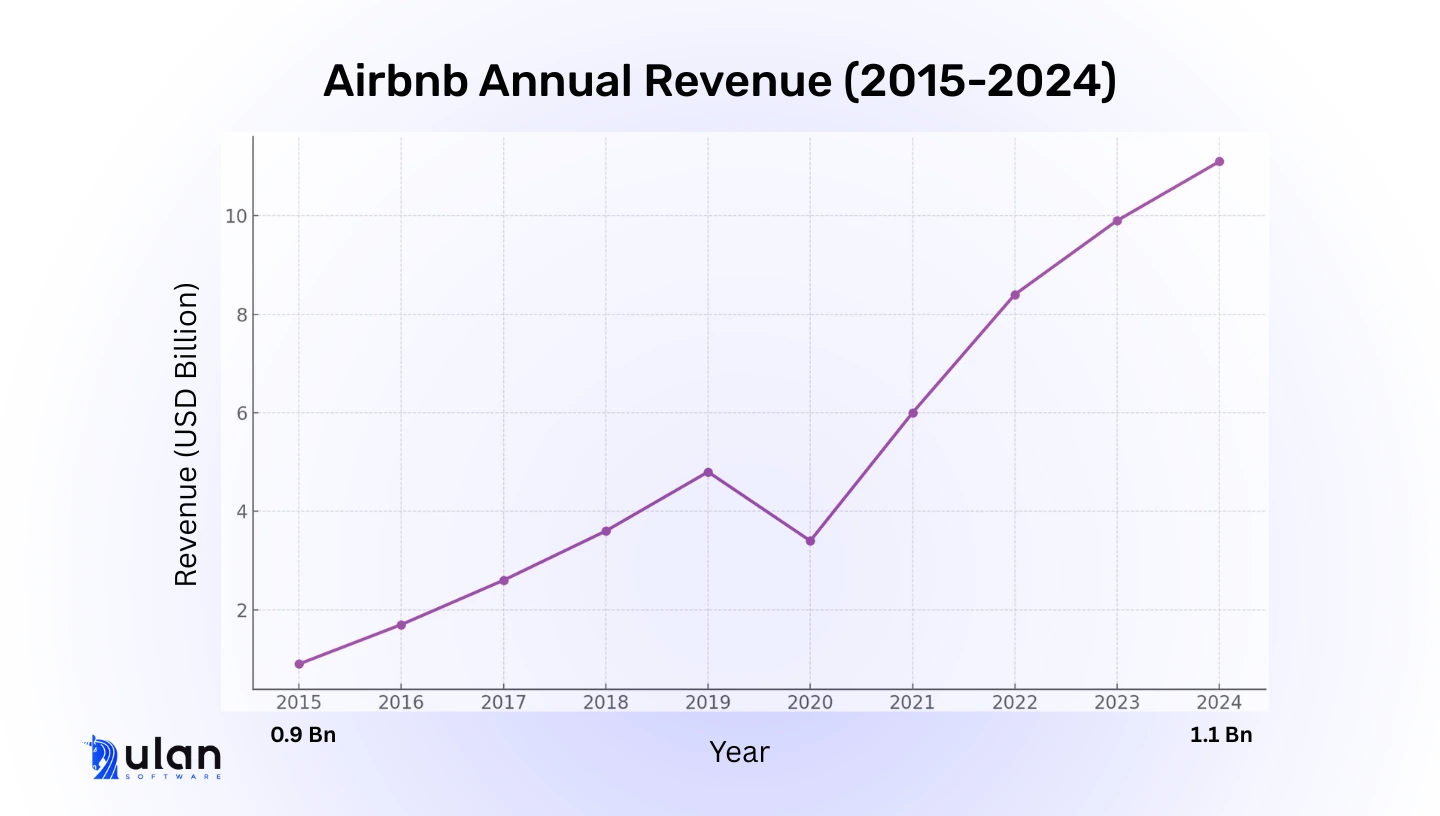
When it comes to monetization, Airbnb earns revenue by charging service fees on each booking. The platform takes a commission from both guests and hosts.
Traditionally, hosts pay about 3% of the booking value, while guests pay around 14–16% as a service fee on top of the listing price.
Recently, Airbnb introduced a host-only fee model (typically 15% deducted from the host payout) for certain professional hosts, making the total price more transparent to guests.
Worth mentioning that Airbnb does not charge hosts for listing properties, it only monetizes once a booking is completed.

How Uber Makes Money
Uber is a global platform best known for ride-hailing, food delivery, and freight services. It connects passengers with drivers, restaurants with couriers, and businesses with logistics providers through a mobile app.
Uber’s primary revenue comes from commission fees on each ride or delivery. Uber typically keeps around 20–30% of the fare paid by riders, taking this cut from drivers’ earnings.
In food delivery (Uber Eats), Uber charges restaurants a commission, usually between 15% and 30% of the order value. Customers also pay service and delivery fees. Together, these fees push Uber’s overall take rate into the mid-20% range.
In 2024, Uber’s combined take rate from rides and deliveries was about 24.4%. This means that about a quarter of the gross booking amount went to Uber as revenue.
This number is subject to change. During certain periods, Uber’s take rate has approached ~28%. This happened during times of elevated surge pricing or improvements in operational efficiency.
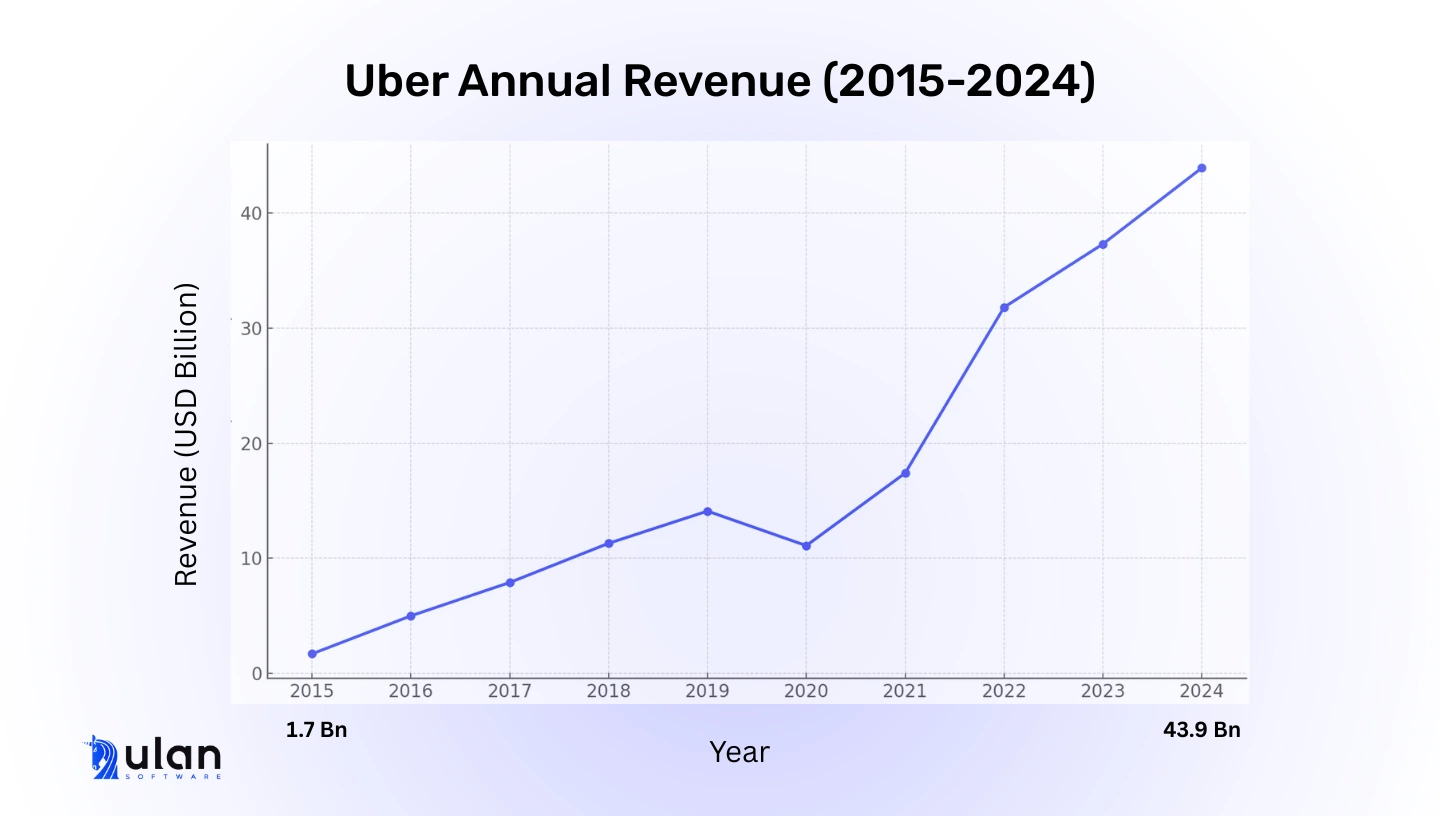
Uber’s primary revenue comes from commission fees on each ride or delivery. Uber typically keeps around 20–30% of the fare paid by riders, taking this cut from drivers’ earnings.
In food delivery (Uber Eats), Uber charges restaurants a commission, usually between 15% and 30% of the order value. Customers also pay service and delivery fees. Together, these fees push Uber’s overall take rate into the mid-20% range.
In 2024, Uber’s combined take rate from rides and deliveries was about 24.4%. This means that about a quarter of the gross booking amount went to Uber as revenue.
This number is subject to change. During certain periods, Uber’s take rate has approached ~28%. This happened during times of elevated surge pricing or improvements in operational efficiency.

How Does Upwork Make Money
Upwork is one of the largest marketplaces for freelance work. It connects freelancers and clients across a wide range of industries, from design to programming.
Upwork’s main revenue comes from taking a commission on payments made to freelancers.
For years, Upwork used a tiered fee system. Freelancers paid 20% on the first $500 billed to a client, 10% for amounts between $500.01 and $10,000, and 5% for anything over $10,000.
This was designed to reward long-term relationships between freelancers and clients.
In 2023, Upwork simplified its pricing. Now, most freelancers pay a flat 10% service fee on all earnings, no matter the contract size. Larger contracts through Upwork’s Enterprise offering can qualify for an even lower 5% fee.
On the client side, Upwork had a payment processing fee of around 3%. However, this fee structure has been changing. By 2023, Upwork was phasing out client fees to focus on a single, simpler freelancer fee.

Upwork’s main revenue comes from taking a commission on payments made to freelancers.
For years, Upwork used a tiered fee system. Freelancers paid 20% on the first $500 billed to a client, 10% for amounts between $500.01 and $10,000, and 5% for anything over $10,000.
This was designed to reward long-term relationships between freelancers and clients.
In 2023, Upwork simplified its pricing. Now, most freelancers pay a flat 10% service fee on all earnings, no matter the contract size. Larger contracts through Upwork’s Enterprise offering can qualify for an even lower 5% fee.
On the client side, Upwork had a payment processing fee of around 3%. However, this fee structure has been changing. By 2023, Upwork was phasing out client fees to focus on a single, simpler freelancer fee.

Fiverr Business Model
Fiverr is a freelance marketplace focused on small, fast-turnaround digital services (called “gigs” ). Fiverr handles smaller projects like logo design, video editing, or writing short articles.Fiverr’s main revenue comes from transaction fees taken on each gig. It places the larger fee burden on freelancers. For every order, Fiverr keeps 20% of the freelancer’s earnings. For example, if a freelancer sells a logo for $100, they receive $80, and Fiverr keeps $20.
Fiverr also charges buyers a service fee at checkout. This is usually around 5% of the order amount, with a minimum fee of about $2. So, a $100 gig might cost the buyer $105, letting Fiverr earn $5 more from the buyer side.
By charging both freelancers and buyers, Fiverr maintains a high take rate compared to many other platforms.
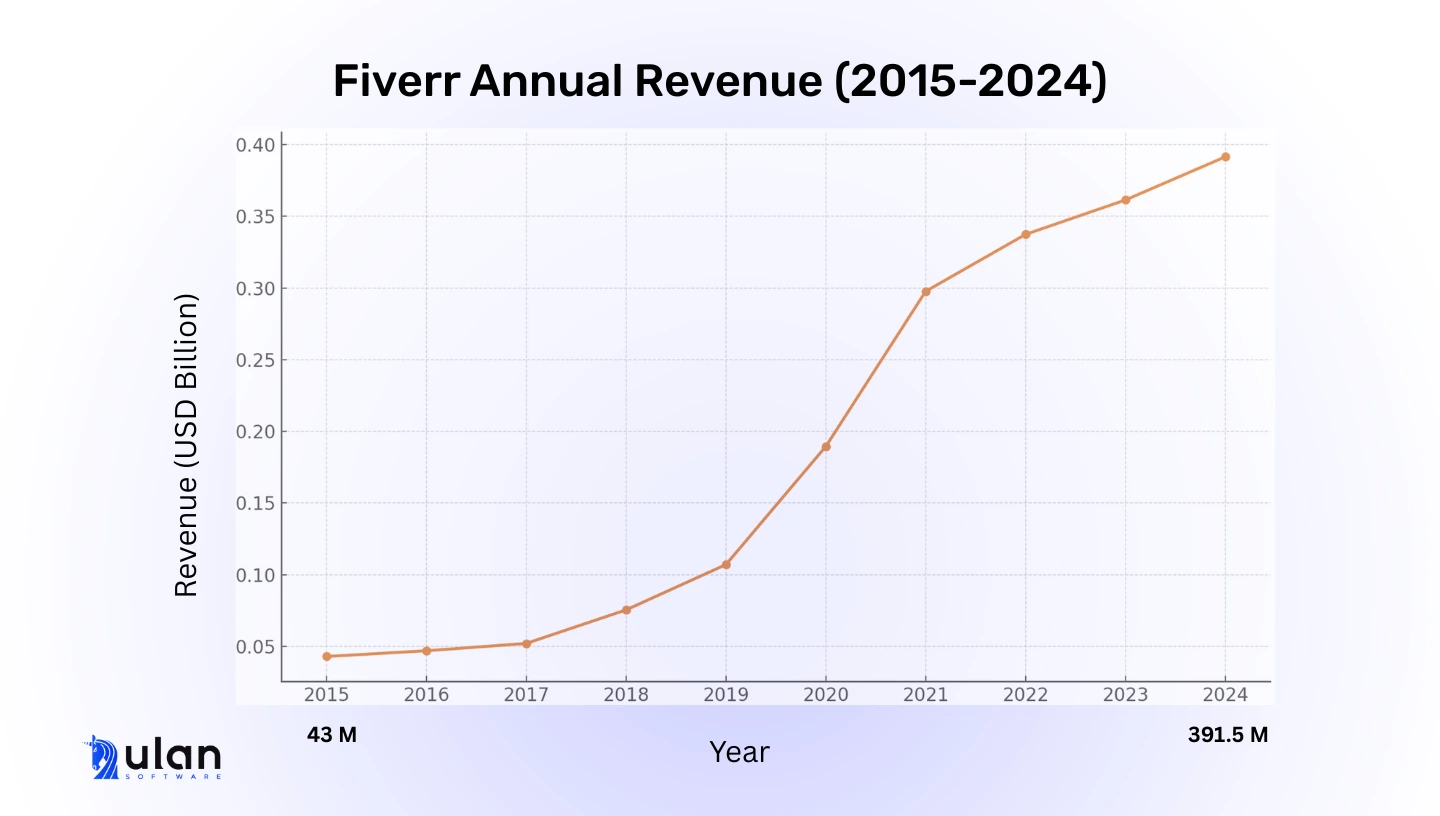
How Does TaskRabbit Work
TaskRabbit is a marketplace that connects people with local service providers, called “Taskers.” Common tasks include furniture assembly, moving help, handyman work, and running errands.
TaskRabbit’s main revenue comes from service fees added to each task transaction. The model is built into the pricing. Taskers set their own hourly rates, and TaskRabbit adds a markup on top of that. Sometimes, there’s also a small fixed fee for trust and support services.
The exact breakdown isn’t always clear to users. But in practice, TaskRabbit takes roughly 15% or more of the total transaction. For example, if a Tasker charges $40 per hour, the client might pay around $50 per hour. The difference, about $10 per hour, covers TaskRabbit’s fee and any extra service charges.
User suggest that TaskRabbit’s fees usually equal about 20–30% of the total amount the client pays.
In the past, TaskRabbit charged Taskers a 15% commission and added a separate client fee. Today, both fees are bundled into the final price shown to clients.
See how we helped TaskRabbit build a Driver Management App integrated with IKEA.

TaskRabbit’s main revenue comes from service fees added to each task transaction. The model is built into the pricing. Taskers set their own hourly rates, and TaskRabbit adds a markup on top of that. Sometimes, there’s also a small fixed fee for trust and support services.
The exact breakdown isn’t always clear to users. But in practice, TaskRabbit takes roughly 15% or more of the total transaction. For example, if a Tasker charges $40 per hour, the client might pay around $50 per hour. The difference, about $10 per hour, covers TaskRabbit’s fee and any extra service charges.
User suggest that TaskRabbit’s fees usually equal about 20–30% of the total amount the client pays.
In the past, TaskRabbit charged Taskers a 15% commission and added a separate client fee. Today, both fees are bundled into the final price shown to clients.
See how we helped TaskRabbit build a Driver Management App integrated with IKEA.

Thumbtack Revenue Model
Thumbtack is a marketplace that connects customers with local service providers. You can find there wide range of service providers, from plumbers and photographers to tutors and event planners.
Thumbtack doesn’t take a commission from completed jobs. Instead, it charges service providers for leads. Professionals pay to send quotes to potential customers, even if they don’t end up getting hired.
Here’s how it works.
A customer posts a project request. Providers can respond with quotes. Each time a provider sends a quote, they pay Thumbtack a set fee. For example, a plumber might pay $10 to quote on a posted plumbing job. If five plumbers respond, Thumbtack earns $50, even though only one plumber will win the project.
In earlier years, Thumbtack used a credit system. Providers had to buy credits in advance and spend them to submit quotes. Today, the process is simpler. Professionals see the actual dollar amount it costs to respond to each lead.
Thumbtack’s model focuses on monetizing introductions, not transactions.
In fiscal year 2024, Thumbtack generated $400 million in revenue. It is a 27% increase from the prior year, as billions of dollars flowed to the approximately 300,000 small businesses using the platform to secure jobs.
Thumbtack doesn’t take a commission from completed jobs. Instead, it charges service providers for leads. Professionals pay to send quotes to potential customers, even if they don’t end up getting hired.
Here’s how it works.
A customer posts a project request. Providers can respond with quotes. Each time a provider sends a quote, they pay Thumbtack a set fee. For example, a plumber might pay $10 to quote on a posted plumbing job. If five plumbers respond, Thumbtack earns $50, even though only one plumber will win the project.
In earlier years, Thumbtack used a credit system. Providers had to buy credits in advance and spend them to submit quotes. Today, the process is simpler. Professionals see the actual dollar amount it costs to respond to each lead.
Thumbtack’s model focuses on monetizing introductions, not transactions.
In fiscal year 2024, Thumbtack generated $400 million in revenue. It is a 27% increase from the prior year, as billions of dollars flowed to the approximately 300,000 small businesses using the platform to secure jobs.
How Angie Makes a Profit
Angi Inc. (previsouly Angie’s List and HomeAdvisor) is a major marketplace for home services. It connects homeowners with contractors like plumbers, electricians, and painters.
Before, Angie’s List used a subscription model for consumers. HomeAdvisor charged contractors for leads.
Today, under the unified Angi brand, the platform makes money by selling leads and advertising to service providers.
Here’s how Angi earns:
This pay-per-lead model lets Angi monetize introductions without depending on completed transactions.
Memberships might include a set number of leads or special certifications, like the "Angi Certified" badge, to build trust with homeowners.
While not yet a major revenue source, Angi Key shows a shift toward monetizing the consumer side of the marketplace.
For example, a customer might pay Angi $100 for furniture assembly, and Angi pays the contractor $70, keeping the $30 difference as margin.
This commission-like model gives Angi more control over the full service experience and is a growing focus for the company.
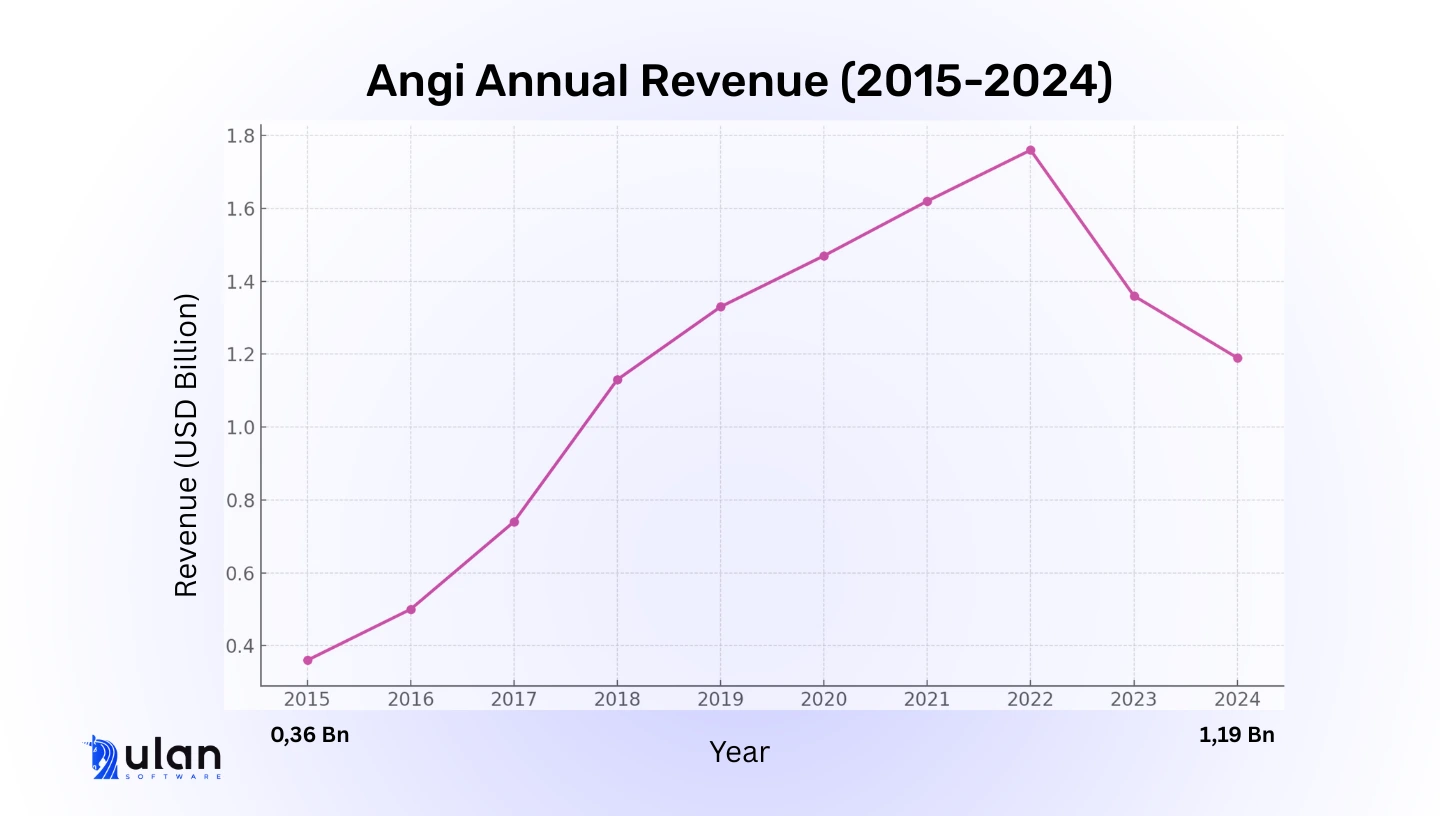
Before, Angie’s List used a subscription model for consumers. HomeAdvisor charged contractors for leads.
Today, under the unified Angi brand, the platform makes money by selling leads and advertising to service providers.
Here’s how Angi earns:
Lead Fees
Service professionals pay Angi for every lead they receive. When a homeowner submits a job request, Angi often sells that lead to several contractors in the area. For example, if four roofing companies each pay $50 for the same roof repair lead, Angi earns $200, no matter which contractor wins the job.This pay-per-lead model lets Angi monetize introductions without depending on completed transactions.
Advertising and Membership Packages for Pros
Contractors can also pay for extra visibility. Angi offers premium directory placements, featured contractor badges, and bundled membership packages.Memberships might include a set number of leads or special certifications, like the "Angi Certified" badge, to build trust with homeowners.
Consumer Membership (Angi Key)
Angi introduced a subscription program called Angi Key for homeowners. For about $30 a year, subscribers get service discounts and access to a dedicated customer support team.While not yet a major revenue source, Angi Key shows a shift toward monetizing the consumer side of the marketplace.
Fixed-Price Services (Angi Services)
In some markets, Angi allows customers to book services at fixed prices. Instead of just connecting users with contractors, Angi acts as the service provider. It collects payment from the customer, then dispatches a contractor or its own employees.For example, a customer might pay Angi $100 for furniture assembly, and Angi pays the contractor $70, keeping the $30 difference as margin.
This commission-like model gives Angi more control over the full service experience and is a growing focus for the company.

DoorDash Business Model
DoorDash is a major food delivery marketplace that connects customers, restaurants, and couriers (called "Dashers").
Its main source of revenue comes from commissions and service fees on each order. Restaurants pay DoorDash a commission, usually between 15% and 30% of the order subtotal.
The exact rate depends on the type of partnership. DoorDash offers different plans where restaurants can trade higher commissions for lower customer fees, or vice versa.
At the same time, customers pay several fees on each order. There’s a delivery fee, which can range from $0 to over $5 based on distance, demand, or promotions. There’s also a service fee, typically around 10–15% of the order subtotal.
Here’s how it looks in a real example:
On a $30 food order, the customer might pay $5 for delivery and $3 as a service fee, bringing their total to $38. The restaurant might only receive about $24 if DoorDash took a 20% commission. DoorDash’s revenue would then be the $4–6 from the restaurant plus $3 from the customer, earning about $7–9 on that $30 order.
In total, DoorDash captures roughly 25–30% of the gross order value across both sides of the transaction.
Its main source of revenue comes from commissions and service fees on each order. Restaurants pay DoorDash a commission, usually between 15% and 30% of the order subtotal.
The exact rate depends on the type of partnership. DoorDash offers different plans where restaurants can trade higher commissions for lower customer fees, or vice versa.
At the same time, customers pay several fees on each order. There’s a delivery fee, which can range from $0 to over $5 based on distance, demand, or promotions. There’s also a service fee, typically around 10–15% of the order subtotal.
Here’s how it looks in a real example:
On a $30 food order, the customer might pay $5 for delivery and $3 as a service fee, bringing their total to $38. The restaurant might only receive about $24 if DoorDash took a 20% commission. DoorDash’s revenue would then be the $4–6 from the restaurant plus $3 from the customer, earning about $7–9 on that $30 order.
In total, DoorDash captures roughly 25–30% of the gross order value across both sides of the transaction.
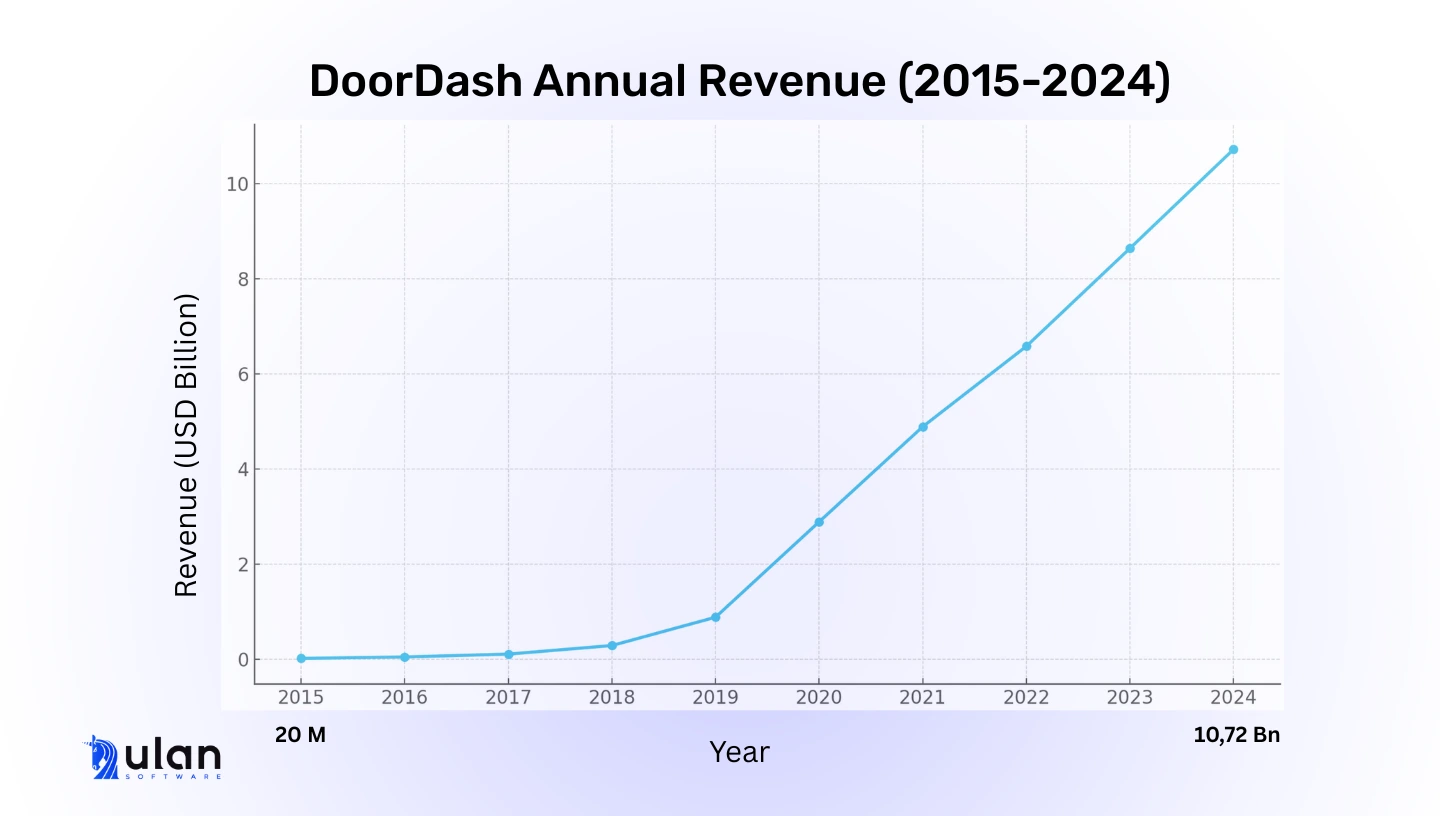
How Grab (Super-App) Works?
Grab is a Southeast Asian super-app that started with ride-hailing and expanded into food delivery, parcel delivery, and even financial services.
Its marketplace services (rides, food, and deliveries) earn revenue mainly through commissions on transactions. The model is similar to what Uber and DoorDash use, but Grab runs everything inside one app ecosystem.
In ride-hailing, Grab takes a commission from drivers, usually around 20–25% of the fare.
For food delivery, Grab charges restaurants a commission too, often between 25% and 30%, depending on the market. Customers pay extra as well, through delivery fees and service fees added at checkout.
These commissions and fees form the core of Grab’s revenue. By applying the same basic model across different services, Grab can grow its business while keeping users inside the app.
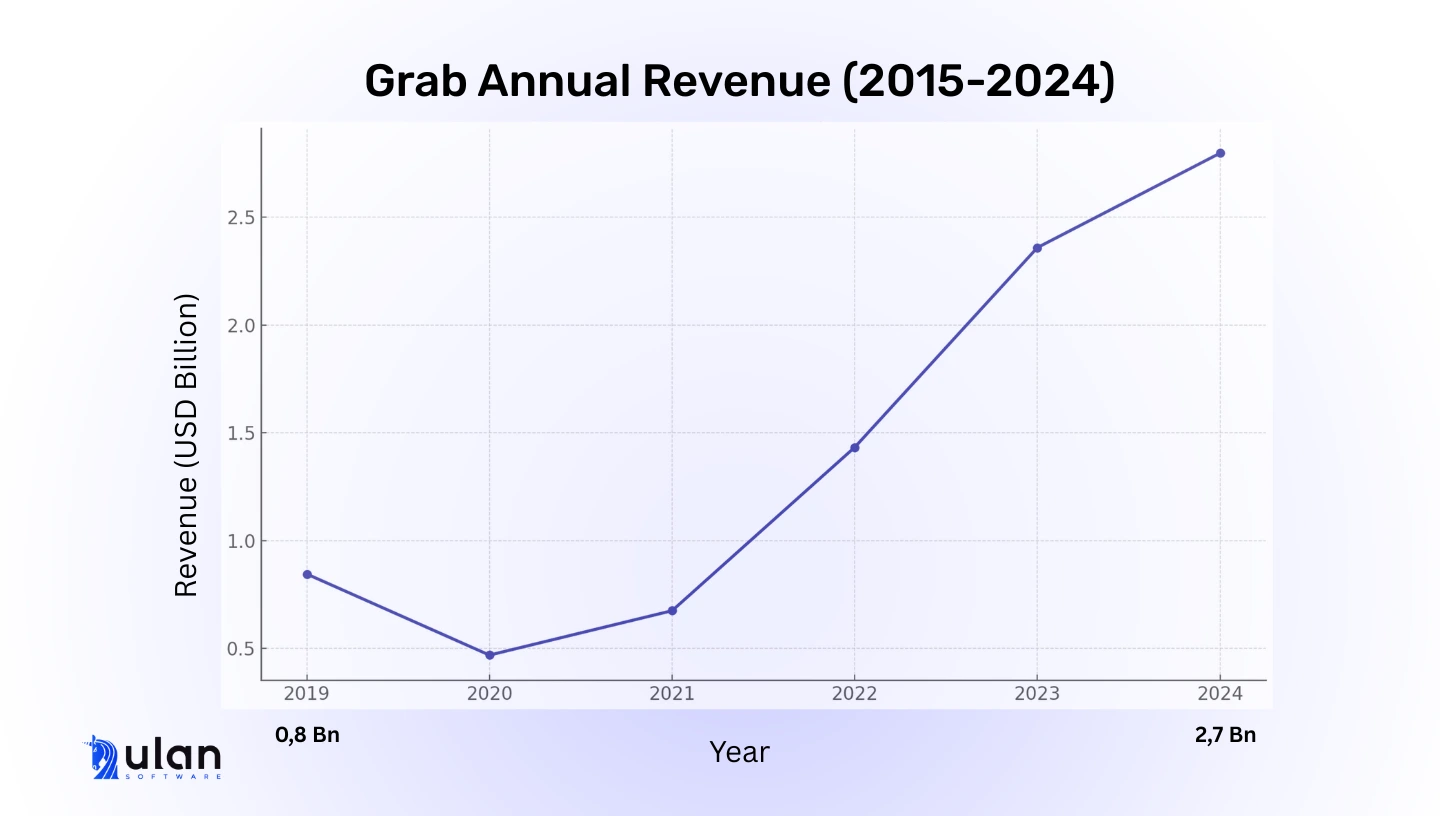
Its marketplace services (rides, food, and deliveries) earn revenue mainly through commissions on transactions. The model is similar to what Uber and DoorDash use, but Grab runs everything inside one app ecosystem.
In ride-hailing, Grab takes a commission from drivers, usually around 20–25% of the fare.
For food delivery, Grab charges restaurants a commission too, often between 25% and 30%, depending on the market. Customers pay extra as well, through delivery fees and service fees added at checkout.
These commissions and fees form the core of Grab’s revenue. By applying the same basic model across different services, Grab can grow its business while keeping users inside the app.

Instacart Business Model
Instacart is an on-demand grocery delivery marketplace. It connects customers with personal shoppers from local stores. Its monetization model is similar to food delivery platforms but has a few important differences.
Instacart charges customers a mix of delivery and service fees. Delivery fees usually range from $3.99 to $7.99 per order, depending on the speed, order size, and whether the customer has a subscription.
Service fees are about 5% of the cart value and help cover platform costs. There are also extra charges, like heavy order fees for bulk items.
Originally, Instacart didn’t take commissions from grocery stores. Instead, it added a markup on grocery prices, meaning customers paid more than the in-store prices.
Today, Instacart has shifted toward more transparent pricing with many partner stores.
When shopping from a partner, customers often pay the same price as in-store, and Instacart makes money through the service fee instead. However, for non-partner stores, Instacart may still apply higher item prices to cover its margin.
When retailers partner with Instacart, they often pay a commission per order. This usually ranges from 10% to 15% of the basket value, although the exact amount depends on the deal. Sometimes, retailers pay higher fees to lower customer service fees as a promotional strategy.

Instacart charges customers a mix of delivery and service fees. Delivery fees usually range from $3.99 to $7.99 per order, depending on the speed, order size, and whether the customer has a subscription.
Service fees are about 5% of the cart value and help cover platform costs. There are also extra charges, like heavy order fees for bulk items.
Originally, Instacart didn’t take commissions from grocery stores. Instead, it added a markup on grocery prices, meaning customers paid more than the in-store prices.
Today, Instacart has shifted toward more transparent pricing with many partner stores.
When shopping from a partner, customers often pay the same price as in-store, and Instacart makes money through the service fee instead. However, for non-partner stores, Instacart may still apply higher item prices to cover its margin.
When retailers partner with Instacart, they often pay a commission per order. This usually ranges from 10% to 15% of the basket value, although the exact amount depends on the deal. Sometimes, retailers pay higher fees to lower customer service fees as a promotional strategy.

What Are ZocDoc's Revenue Sources?
Zocdoc is a marketplace that helps patients find doctors and book medical appointments.
At first, Zocdoc used a subscription model. Doctors paid an annual fee (around $3,000/year) to be listed on the platform. But in 2018, Zocdoc shifted to a pay-per-booking model in many states to better match doctor value with platform use.
Today, Zocdoc earns revenue by charging healthcare providers a fee for each new patient booking. For example, when a new patient books a general dentist through Zocdoc, the dentist might pay a fee of around $35. Fees can be higher for specialists, such as surgeons or dermatologists, where the value of a new patient is greater.
This setup is similar to a lead generation model: doctors pay only when Zocdoc delivers a new patient. Patients, on the other hand, use Zocdoc for free — there’s no charge to search for doctors or book appointments.
According to some sources, Zocdoc's annual revenue reached $750 million as of April 2025, a great increase from just $71M in 2015.
At first, Zocdoc used a subscription model. Doctors paid an annual fee (around $3,000/year) to be listed on the platform. But in 2018, Zocdoc shifted to a pay-per-booking model in many states to better match doctor value with platform use.
Today, Zocdoc earns revenue by charging healthcare providers a fee for each new patient booking. For example, when a new patient books a general dentist through Zocdoc, the dentist might pay a fee of around $35. Fees can be higher for specialists, such as surgeons or dermatologists, where the value of a new patient is greater.
This setup is similar to a lead generation model: doctors pay only when Zocdoc delivers a new patient. Patients, on the other hand, use Zocdoc for free — there’s no charge to search for doctors or book appointments.
According to some sources, Zocdoc's annual revenue reached $750 million as of April 2025, a great increase from just $71M in 2015.
How Does Care.com Make Money?
Care is a marketplace that connects families with caregivers. This includes babysitters, nannies, tutors and senior care aides.
Care’s primary revenue comes from a subscription model for families. Families need a premium membership to contact caregivers, post jobs, run background checks, and hire.
The typical subscription prices are around $39 per month, $78 for three months, or $156 for a year. Paying members get full access to the caregiver database and communication tools.
On the caregiver side, creating a basic profile and applying for jobs is free.
However, caregivers can pay for optional services like background checks or profile upgrades to improve visibility and trust. Some can also pay for early access to job postings or premium placement to stand out to families.
Care’s primary revenue comes from a subscription model for families. Families need a premium membership to contact caregivers, post jobs, run background checks, and hire.
The typical subscription prices are around $39 per month, $78 for three months, or $156 for a year. Paying members get full access to the caregiver database and communication tools.
On the caregiver side, creating a basic profile and applying for jobs is free.
However, caregivers can pay for optional services like background checks or profile upgrades to improve visibility and trust. Some can also pay for early access to job postings or premium placement to stand out to families.
Rover Business Model Explained
Rover is a marketplace for pet care services, including pet sitting, dog walking, and overnight boarding.
Rover’s main revenue comes from commission fees on each booking. When a pet owner books a service, Rover takes around 15–20% of the payment made to the sitter.
For example, if a pet owner pays $100 for overnight boarding, the pet sitter might receive $80 while Rover keeps $20.
What is more, Rover adds small booking fees for pet owners. This is often a flat $2–$3 fee for short stays or a small percentage for more expensive bookings.
Rover’s model is similar to other gig platforms, where a service fee is charged to providers and a small fee is charged to consumers.
Rover’s main revenue comes from commission fees on each booking. When a pet owner books a service, Rover takes around 15–20% of the payment made to the sitter.
For example, if a pet owner pays $100 for overnight boarding, the pet sitter might receive $80 while Rover keeps $20.
What is more, Rover adds small booking fees for pet owners. This is often a flat $2–$3 fee for short stays or a small percentage for more expensive bookings.
Rover’s model is similar to other gig platforms, where a service fee is charged to providers and a small fee is charged to consumers.
How Udemy Earns Money
Udemy is an online learning marketplace where instructors create courses and students buy them. It works as a two-sided platform, and Udemy makes money by taking a share of each course sale.
Here’s how the revenue split works:
Most course sales happen through Udemy’s own promotions, often with steep discounts.
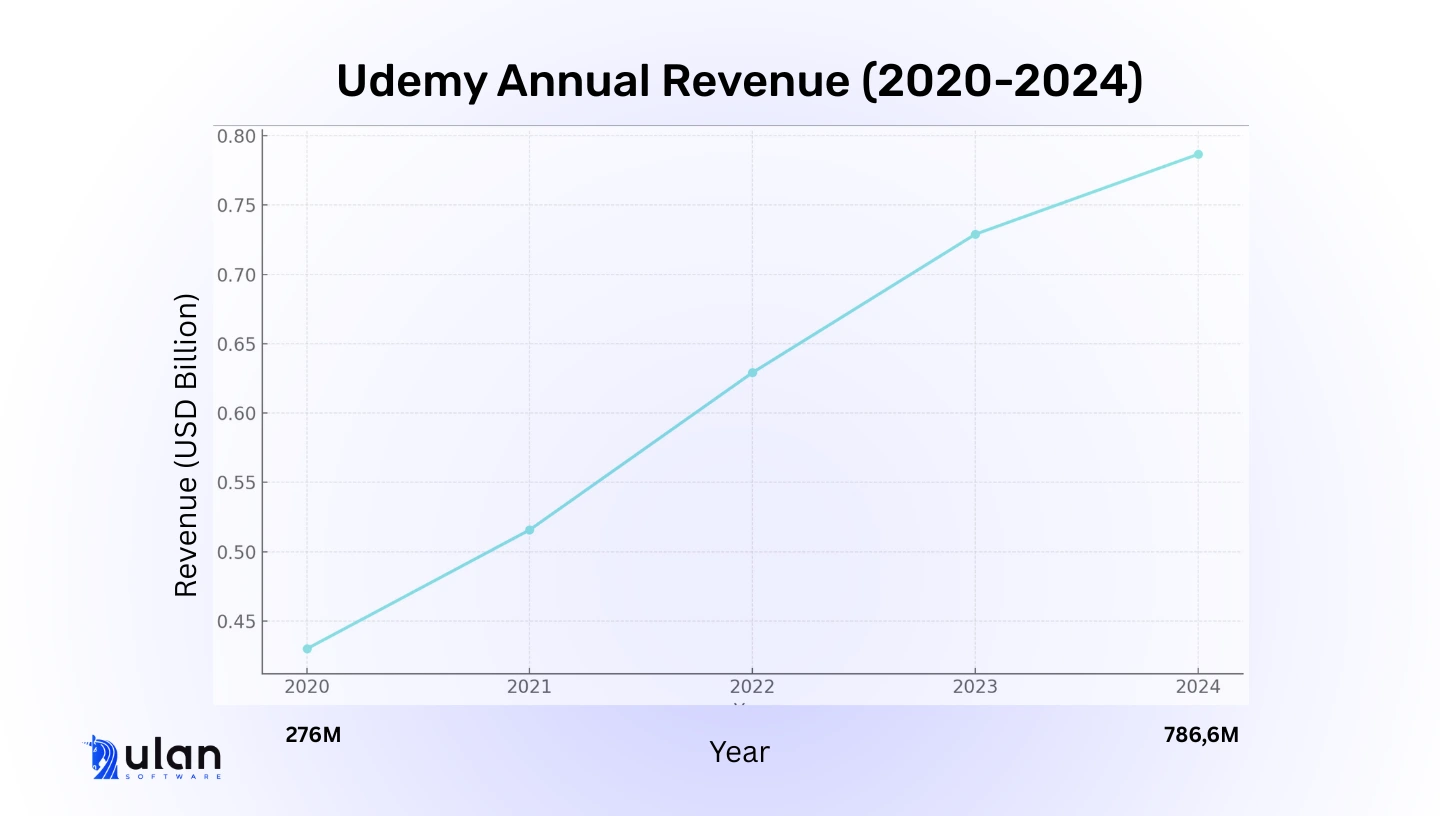
Here’s how the revenue split works:
- If a student finds a course through Udemy’s platform or a Udemy promotion, the instructor usually gets 37% of the sale price. Udemy keeps the remaining 63% after covering transaction costs.
- If the instructor brings in the student, using a coupon or referral link, the instructor keeps 97% of the sale. Udemy only takes a 3% fee to cover payment processing.
- If the sale happens through a paid affiliate or ad partner, the revenue is split: 25% goes to the instructor, 25% to Udemy, and 50% to the partner.
Most course sales happen through Udemy’s own promotions, often with steep discounts.

Eventbrite Business Model
Eventbrite is a self-service ticketing platform that helps event organizers plan, promote, and sell tickets for various events.
Eventbrite’s main revenue comes from service fees and payment processing fees on each paid ticket sold.
For most paid events, the fee structure looks like this:
Organizers can choose whether to absorb these fees themselves or pass them on to ticket buyers at checkout.
Here’s a simple example: If a ticket costs $50, Eventbrite might collect about 5.5% in total fees (around $2.75) plus the $1 fixed fee. This means Eventbrite would take about $3.75 on that $50 ticket. If the fees are passed to the buyer, the buyer pays $53.75. If the organizer absorbs the fees, they keep about $46.25.
For large events selling hundreds or thousands of tickets, these small fees add up to significant revenue.
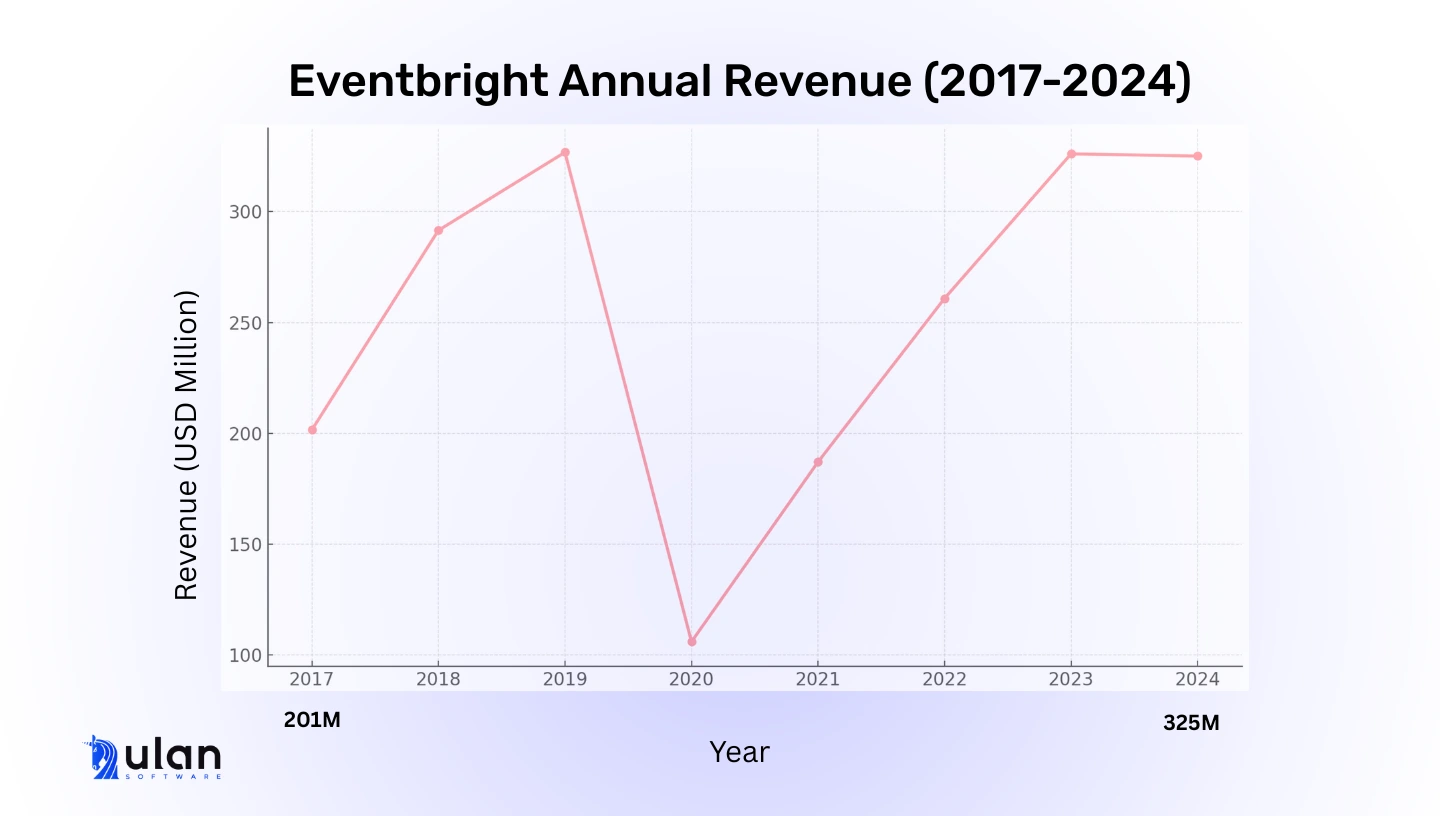
Eventbrite’s main revenue comes from service fees and payment processing fees on each paid ticket sold.
For most paid events, the fee structure looks like this:
- About 2% to 3.5% of the ticket price as a service fee, plus a fixed fee of around $1 per ticket.
- About 3% added for payment processing, usually for credit card transactions.
Organizers can choose whether to absorb these fees themselves or pass them on to ticket buyers at checkout.
Here’s a simple example: If a ticket costs $50, Eventbrite might collect about 5.5% in total fees (around $2.75) plus the $1 fixed fee. This means Eventbrite would take about $3.75 on that $50 ticket. If the fees are passed to the buyer, the buyer pays $53.75. If the organizer absorbs the fees, they keep about $46.25.
For large events selling hundreds or thousands of tickets, these small fees add up to significant revenue.

What Successful Marketplaces Teach Us About Monetization
Analyzing how top platforms like Uber, Airbnb, and Upwork monetize shows clear patterns.
The most successful marketplaces align revenue with user success, and they continuously evolve their models as they grow.
What is the key takeaway for you?
Start with a model that fits your user behavior and value delivery, but don’t be afraid to pivot. Monetization is a critical part of the user experience and platform scalability.
At Ulan Software, we help marketplace founders make these high-stakes decisions with confidence. From validating your business model to building flexible architecture that supports hybrid monetization, we guide you through both strategy and execution.
Don't hesitate to reach out and get free advice from our experts!
The most successful marketplaces align revenue with user success, and they continuously evolve their models as they grow.
What is the key takeaway for you?
Start with a model that fits your user behavior and value delivery, but don’t be afraid to pivot. Monetization is a critical part of the user experience and platform scalability.
At Ulan Software, we help marketplace founders make these high-stakes decisions with confidence. From validating your business model to building flexible architecture that supports hybrid monetization, we guide you through both strategy and execution.
Don't hesitate to reach out and get free advice from our experts!
Karol Andruszków
Karol is a serial entrepreneur who has successfully founded 4 startup companies. With over 11 years of experience in Banking, Financial, IT and eCommerce sector, Karol has provided expert advice to more than 500 companies across 15 countries, including Poland, the USA, the UK, and Portugal.
Table of Contents:
Recommended Articles
Tue, Nov 25
How to Choose the Best Marketplace Software?
Learn how to choose the best marketplace software with a clear, step-by-step guide. Compare models, features, scale, cost, and vendor fit to make a confident choice.
Thu, Nov 20
Top 15 UX Tips to Improve Conversion Rates in Travel Booking
Improve travel booking flow conversion with 15 proven UX tips. Learn how mobile design, pricing clarity, speed, and smart flows reduce friction and lift bookings.
Mon, Nov 17
What to Look for in Enterprise Booking Software?
Learn what to look for in enterprise booking software: key features, integrations, security, and data to guide your 2025 selection.

